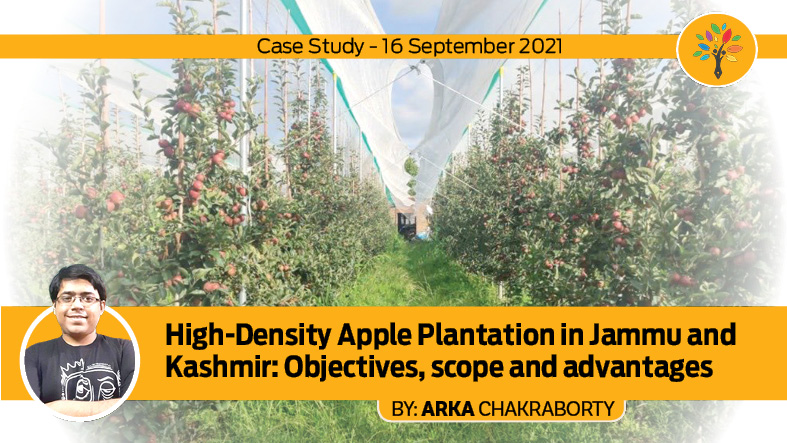Jammu and Kashmir is known throughout India and the world for its splendid horticulture sector. While the region’s annual agricultural growth (9 percent) is already impressive compared to India in general (2.9 percent annually), horticulture is undoubtedly an economic backbone of the Union Territory, contributing about 40 percent of the total output value from the agriculture sector in 2017-18. About 700000 families’ income depends on this sector and 3.3 million people are directly or indirectly affiliated with it. The region’s agro-climatic (sub-tropical. intermediate and temperate) nature and mountainous topography allows for such a diverse and productive horticulture sector. While Jammu and Kashmir produces walnut, apricot, almond, pear, cherry, mango, citrus, litchi, papaya, guava and saffron, apple is the fruit that brings in the most economic benefit. Apple production contributes 60-65 percent of the total output of J&K’s horticulture sector and constitutes 75 percent of the total apple production in India, the other apple-producing areas in the country being Himachal Pradesh, Uttarakhand, Nagaland, Sikkim, Arunachal Pradesh and Meghalaya. This shows the magnitude of the importance of J&K’s apple production in terms of the overall performance of its horticulture sector, its economy, the horticulture sector of India in general and employment generation in the UT and across the country. Given the importance of this sector and the challenges that it faces today, high-density apple plantation i.e. the use of specific technology and advancements to produce a higher number of apples per unit of land is the next crucial step to ensure the continued prosperity of J&K’s horticulture in a changing market. However, the transition from traditional apple production to high-density apple plantation has its own specific challenges which must be addressed properly in order to realize the dream of a world-class horticulture sector in Jammu and Kashmir.




Leave a Reply
You must belogged in to post a comment.